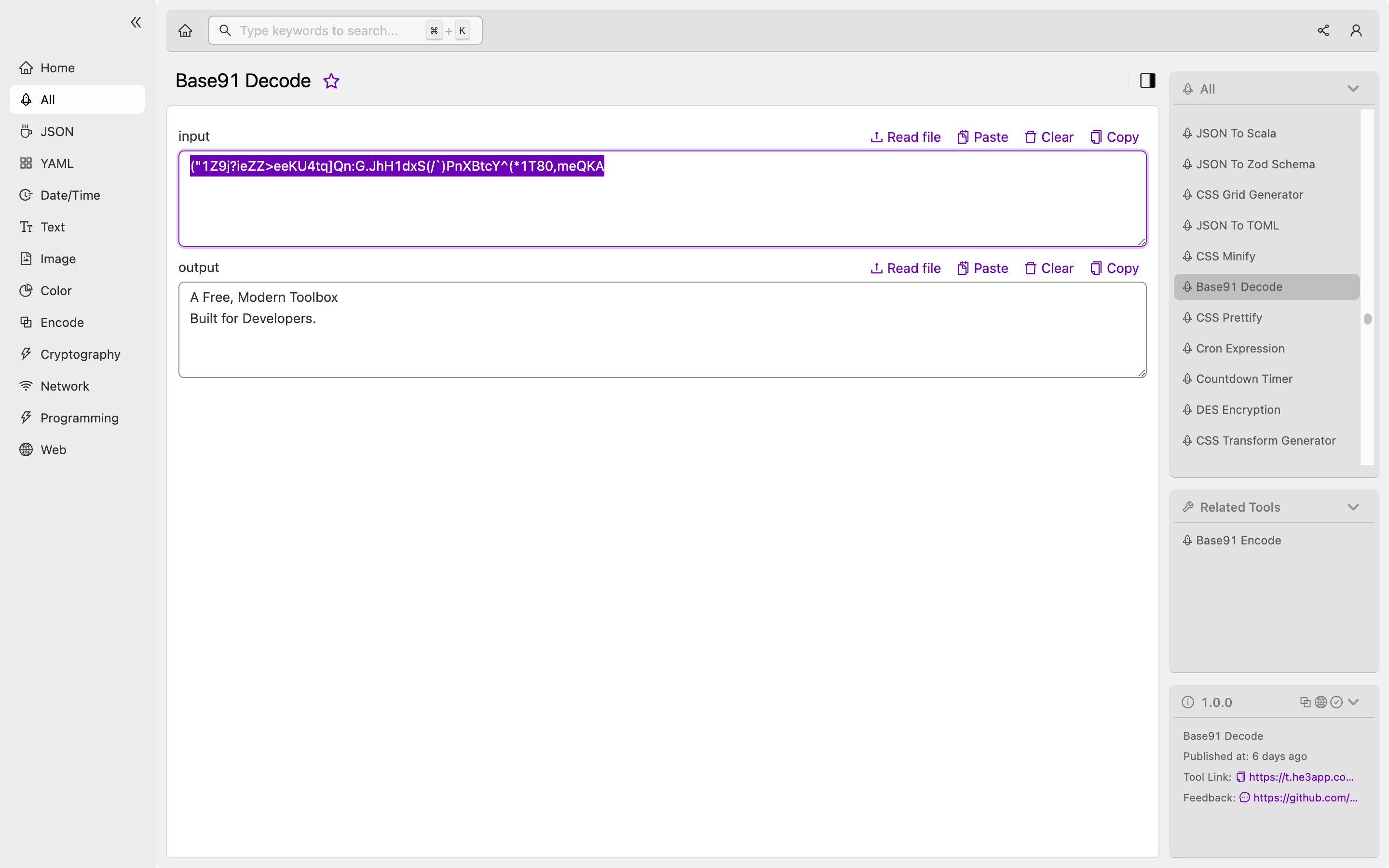Base91 Decode is a binary-to-text encoding scheme that represents binary data in ASCII characters. In this article, we will explore the concept of Base91 Decode, including how it works, how to implement it, and its key features.
How Base91 Decode Works
The Base91 Decode algorithm works by converting binary data into ASCII characters. It uses 91 characters (A-Z, a-z, 0-9, and a few special characters) to encode binary data. Each character represents a value from 0 to 90, and the algorithm uses a 13-bit block to encode or decode data.
The implementation of Base91 Decode is quite simple. The input data is divided into 13-bit blocks, which are then converted into ASCII characters using a lookup table. The resulting characters are concatenated, forming the output string.
To decode a Base91-encoded string, the process is reversed. The encoded string is split into 13-bit blocks, which are then decoded using the lookup table. The resulting binary data is concatenated, forming the output stream.
Implementing Base91 Decode
Base91 Decode can be implemented in various programming languages, including C, Java, Python, and Ruby. Here is a sample code in Python that demonstrates the encoding and decoding of Base91 data:
import base91
data = b"Hello, World!"
encoded_data = base91.encode(data)
decoded_data = base91.decode(encoded_data)
print(encoded_data)
print(decoded_data)Or you can use Base91 Decode tool in He3 Toolbox (https://t.he3app.com?kbim ) easily.

Scenarios for Developers
Base91 Decode can be useful in various scenarios, including data compression, data transfer, and data storage. Since it uses ASCII characters, it is more portable than binary data, making it easier to transfer across different systems and platforms.
Base91 Decode can also be used in situations where the original binary data contains non-printable characters, such as null bytes, which cannot be transmitted over some communication channels.
Key Features of Base91 Decode
Here are some key features of Base91 Decode:
- Base91 data is portable across different systems and platforms.
- Base91 data uses ASCII characters, making it easier to transmit over networks with limited character sets.
- Base91 data has a high compression ratio compared to other binary-to-text encoding schemes.
Misconceptions and FAQs
Misconception: Base91 Decode can only be used for compression.
Base91 Decode is not limited to data compression. It can also be used for data transfer and storage, especially for data that contains non-printable characters.
FAQ #1: Is Base91 Decode secure for transmitting sensitive data?
Base91 Decode is not a security protocol. It is merely a binary-to-text encoding scheme that converts binary data into ASCII characters. To secure sensitive data, it is recommended to use encryption protocols such as SSL/TLS or SSH.
FAQ #2: Is Base91 Decode compatible with all systems and platforms?
Base91 Decode is compatible with most systems and platforms that support ASCII characters. However, some systems may not support all ASCII characters, which may cause problems when transmitting or decoding data.
Conclusion
In conclusion, Base91 Decode is a binary-to-text encoding scheme that can be used for data compression, transfer, and storage. It uses ASCII characters to encode binary data, making it more portable and easier to transmit across different systems and platforms. Base91 Decode can be implemented in various programming languages, and it has a high compression ratio compared to other binary-to-text encoding schemes.
For more information about Base91 Decode, you can check out the Wikipedia page on Base91.
